CRISPR-GNDM® technology
CRISPR-GNDM®
CRISPR-GNDM® is a promising new therapeutic modality
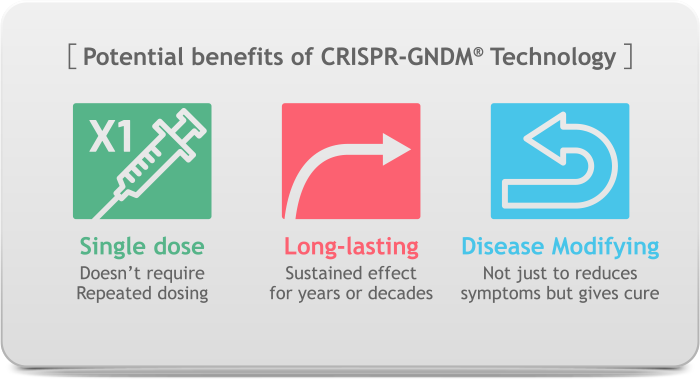
CRISPR-GNDM® Platform Enables Specific Modulation of Gene
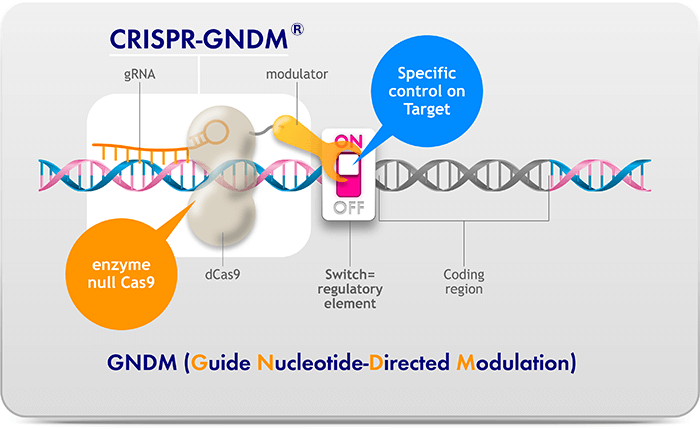
A part of genetic disorders are caused by an error in coding region of a gene. The other part of genetic disorders are caused by malfunction of gene regulation that leads to excessive amount or lack of a gene expression.
CRISPR-GNDM® technology enables to control gene expressions through modulating the switch (epigenetics of a specific locus). An engineered nuclease-null Cas9 protein is fused with various functional moieties (e.g. transcription activator, suppressor), and directed to the locus via gRNA. With this technology we can treat various genetic disorders, caused by toxic gene expressions or lack/insufficient amount of gene expression.
Delivery method of CRISPR-GNDM®
Using AAV vector to deliver GNDM to target cells
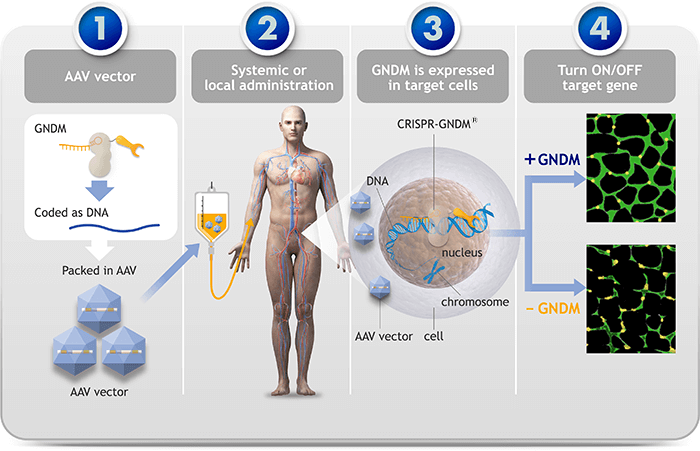
Like other gene therapies, CRISPR-GNDM® employs AAV for delivery into patient cells.
A DNA fragment encoding all necessary components is packed into AAV vector (1). The AAV vector is administrated into target tissue locally or systemically (2). The AAV vector transduces target cells with GNDM DNA and GNDM is translated into protein to function (3). GNDM binds to a target gene to turn on or off to control insufficient or excessive amount of mRNA expressed from a gene.
Advantage of CRISPR-GNDM® 1:
Higher predictability of success
Hurdles for drug development
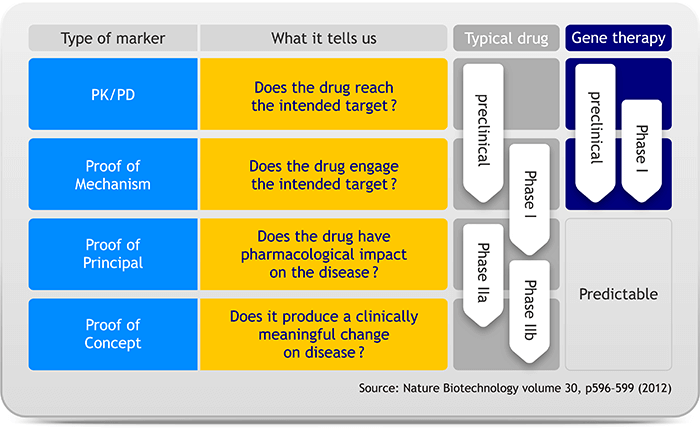
There are a few major hurdles for product development. As Modalis is targeting monogenic disorders, which are caused by a single gene impairments, some of the clinical hurdles are obvious when running a clinical trial. For example, proof of concept of the treatment is clear since the disease-causing gene is known and the disorder can be cured by reversing the specific gene impairment known to be causative for the specific monogenic disorder. This allow us to predict success of a CRISPR-GNDM® drug development program relatively easier when compared to other therapeutic approaches.
Advantage of CRISPR-GNDM® 2: Scalability
Limited variable components while large variety of function
Modify components to target various diseases
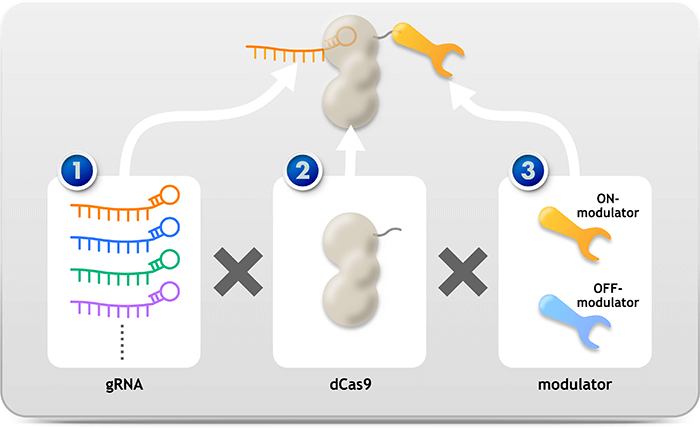
CRISPR-GNDM® technology is readily applicable to various diseases by simply changing the gRNA sequences. Modalis develops best gRNAs for individual disease targets (1). The gRNAs are combined with dCas9 (2) and a modulator (3), invariable components of the technology.
Advantage of CRISPR-GNDM® 3:
No cleavage of genomic DNA
Conventional genome editing is done by cleaving DNA. Double strand breaks (DSB) caused by the DNA cleavage is reported to increase cancer risks (Haapaniemi et.al., Nature Medicine volume 24, 2018). Another risk called “off-target effect”, which refers to unintended genetic modifications that can arise through genome editing, is also raised as a crucial concern.
CRISPR-GNDM®, on the other hand, is the unique method to alter gene expressions without the need for cleaving DNA but by regulating “switch”. This allows to treat genetic disorders while avoiding the risks.


